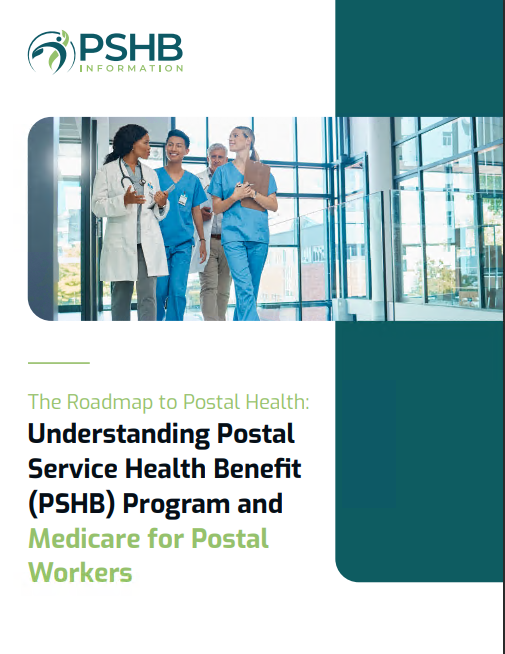Key Takeaways
-
Many Postal retirees miss critical Medicare enrollment deadlines because they assume PSHB coverage alone is sufficient.
-
The Medicare Part B requirement tied to PSHB in 2025 includes rigid exceptions, and failure to enroll on time can result in permanent gaps in coverage.
What You Need to Know About the Medicare and PSHB Timeline
The Postal Service Health Benefits (PSHB) program has changed how health coverage works for Postal retirees. Starting January 1, 2025, if you’re a Medicare-eligible annuitant or family member covered under a PSHB plan, you’re required to enroll in Medicare Part B to keep full PSHB benefits. This is not optional unless you qualify for a specific exemption.
The problem? Many retirees misunderstand the enrollment timeline. They miss critical deadlines and find themselves paying more, getting less, or facing disruptions in coverage they thought was guaranteed.
Let’s break down why this happens—and how you can avoid being one of them.
The Medicare Enrollment Period That Matters Most
Medicare has several enrollment windows, but one matters more than all the others for PSHB enrollees: the Initial Enrollment Period (IEP).
-
The IEP spans seven months: three months before your 65th birthday, the month of your birthday, and three months after.
-
If you don’t enroll in Medicare Part B during this window—and you’re required to under the PSHB rules—you risk losing parts of your PSHB coverage.
-
If you miss this window, you may need to wait for the General Enrollment Period (January 1 to March 31), with coverage not starting until July—and with lifetime late penalties on your Part B premium.
Why Retirees Miss the Enrollment Window
1. They Think PSHB Covers Everything Automatically
There’s a common misconception that PSHB provides complete health coverage even after age 65 without needing Medicare. But in 2025, PSHB coverage is conditional—you must enroll in Part B if you are Medicare-eligible and do not meet one of the few exceptions.
Failing to pair your PSHB with Medicare Part B in time could result in increased out-of-pocket costs, denied services, or even plan cancellation in the future.
2. They Don’t Know They’re Required to Enroll
Some retirees assume enrolling in Medicare is optional. That may have been true under the FEHB system, but under PSHB rules, Medicare enrollment is now mandatory for most eligible retirees.
The rule applies unless you:
-
Retired on or before January 1, 2025, and are not enrolled in Part B.
-
Are an employee aged 64 or older as of January 1, 2025.
-
Live abroad or qualify for VA or Indian Health Services benefits.
If you don’t fall into these categories, you must enroll in Medicare Part B when eligible—or risk losing critical components of your PSHB coverage.
3. They Miss the Special Enrollment Period
In 2024, there was a Special Enrollment Period (SEP) for Postal retirees who were already eligible for Medicare but had never enrolled in Part B. It ran from April 1 to September 30, 2024. Missing this SEP means those retirees may now face late penalties and coverage delays.
Those turning 65 in 2025 or later will need to act during their IEP—no SEP will apply to them.
4. They Underestimate the Penalties
Missing the enrollment window doesn’t just mean a delay—it also means permanent financial penalties.
-
You pay a 10% Part B penalty for each full 12-month period you were eligible but didn’t enroll.
-
This penalty lasts for life and is added to your Part B premium every month.
If you thought skipping Medicare would save money, this long-term penalty often makes the decision far more expensive.
How PSHB Pairs with Medicare—and Why Timing Matters
Pairing Medicare Part B with your PSHB plan is essential for unlocking full benefits. When coordinated correctly, you gain access to:
-
Lower deductibles or waived deductibles
-
Reduced copayments and coinsurance
-
Expanded provider networks and access to specialists
-
Automatic enrollment in prescription drug coverage through a Medicare Part D Employer Group Waiver Plan (EGWP)
But if you don’t enroll in Part B at the right time, you may not get these advantages. In fact, some PSHB plans may reduce benefits or deny claims if you skip Medicare enrollment when required.
Don’t Count on Auto-Enrollment
Another major reason retirees miss the window: they assume they’ll be automatically enrolled.
While the PSHB system may transition you automatically into a corresponding health plan during Open Season, Medicare Part B does not work that way unless you’re already receiving Social Security benefits before age 65.
If you’ve delayed claiming Social Security, you must proactively enroll in Medicare Part B during your IEP. No one does it for you.
What Happens If You Miss It?
Missing the enrollment window can create a snowball effect:
-
You might lose drug coverage under your PSHB plan.
-
You could be stuck waiting until the next General Enrollment Period, with coverage not starting until July.
-
You’ll likely face lifelong penalties on your premiums.
-
You might have a gap in coverage, during which PSHB plans don’t fully pay claims.
These consequences are difficult—and in many cases, irreversible.
The Clock Starts Ticking at 64
Many retirees only start thinking about Medicare at 65—but by then, you may already be behind.
At 64 and 9 months, you should receive a notice from Medicare. Don’t ignore it. Use that time to:
-
Check if you’re required to enroll under PSHB
-
Determine your Initial Enrollment Period
-
Review your Social Security status to see if automatic enrollment applies
-
Contact a licensed agent listed on this website to evaluate your timing
What You Can Do Now
If you haven’t yet reached Medicare age but you’re approaching 64, start preparing now. Here’s how:
-
Mark your IEP window clearly on your calendar.
-
Check if you meet any exemptions from the PSHB Medicare Part B requirement.
-
Review your PSHB plan materials for Medicare coordination details.
-
Call Social Security to confirm your automatic enrollment status.
-
Talk to a licensed agent listed on this website to avoid missing deadlines.
If you’ve already turned 65 and haven’t enrolled in Medicare Part B, you should act immediately. The longer you wait, the more it could cost you—in both coverage and dollars.
Final Thoughts on Timing and Coverage Loss
2025 marks a new era for Postal retirees. PSHB plans are no longer standalone solutions after Medicare eligibility begins. Instead, they function as a coordinated package that demands action—especially during your Initial Enrollment Period.
By missing Medicare deadlines, you don’t just risk penalties—you risk losing the security and reliability of the health coverage you worked so hard to earn. Don’t wait for a letter or a second chance that may never come.
Take control of the timing now, while you still can.
For personal help tailored to your situation, reach out to a licensed agent listed on this website today.







